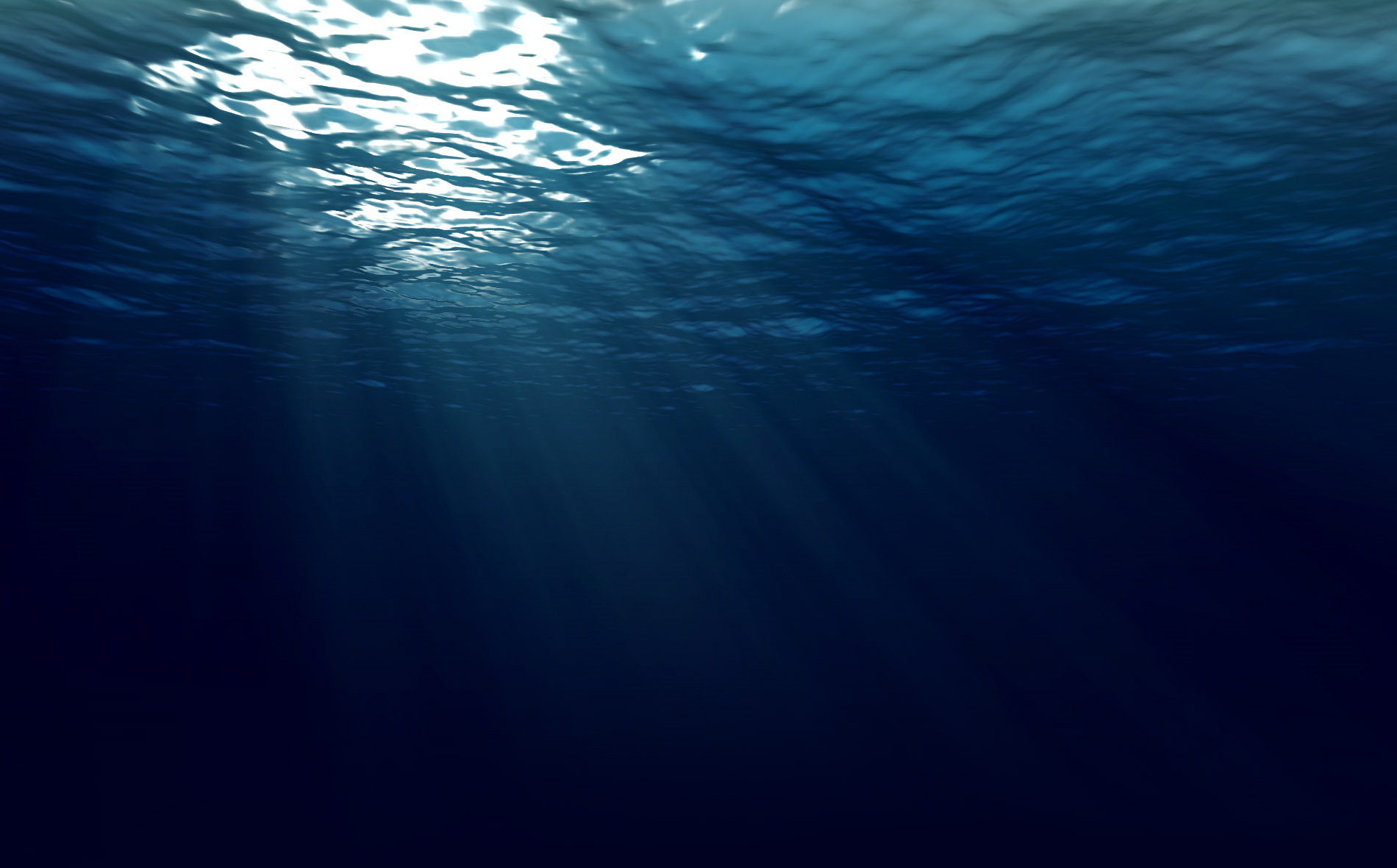StonesWild 5/14/15
First off let me thank you all for reading this- Its important my blogs get recognized properly
Article eight, here we go.
I, Stone, would like to welcome you all to todays wildlife discussion...
Deepwater Dwellers- Take a Dive
Let's start off by getting to our setting.
First, we'll need to take a dive...
Let's start off by getting to our setting.
First, we'll need to take a dive...
Down farther...

I'd say we're here now.
Okay, this is the part where we begin. This months topic is some of the most adaptable, tough wildlife out there- Animals that continuously, their entire lives, actually, live under thousands of pounds of pressure in a world never touched by light. These are the Deepwater Dwellers, a special biological community of fish and invertebrates adapted to live in the deepest part of the ocean, more specifically:
The Marianas Trench.
This is, in all respects, a dark oceanic void, located north of New Guinea and east of Japan. The geography is as follows: The Marinas Trench is divided into five zones. The first, the Daylight/Twilight Zone, begins at the surface and descends to 3,300 feet/1,000 meters. Then the Midnight Zone comes into play. Here is where all visible light penetration comes to a halt. This is the maximum depth that marine mammals, such a sperm whales can dive to. Now, at 13,100 feet/4,000 meters, comes the Abyss. This is the depth at which the Titanic rests on the other side of the continents. Further, at 32,800 feet/ 10,000 meters, the Trenches begin, which penetrate as deep as an inverted Mount Everest in some areas. Finally, the bottom...at a full 36,000 feet/11,000 meters, a full 6.84 miles below the surface. 15,750 psi, over 1000 times the pressure at the surface, makes this a very difficult place to survive.
But yet, so many do...
The Goblin Shark
Mitsukurina owstoni
This cartilaginous fish is hardly believable. It looks like a species straight out of a nightmare (or possibly a dream, if your like me.). Incredulously ugly, the probe seen on this fish's rostrum is used to detect very slight electrical disturbances in order to find prey in the sub-par hunting conditions present in this animal's habitat. This is assisted by the ampullae of Lorenzini, gelatinous pores resembling the resented human condition known as acne. This alien-like shark can correctly be grouped with the select few animals known to man as "living fossils", one of the only representatives of a lineage surviving long since its golden age. Perhaps it is simply a relic, or perhaps we as humans, having only lived on this planet 1/160 of the time sharks have. When comparing ourselves to other species, the human race is actually quite young.

The Pacific Barreleye
Macropinna microstoma
This is a transparent example of deep sea fish, quite literally. The cranial works of this fish are easily visible throughout this animals transparent skin. Aside from the disturbing-enough appearance, the green barrel shaped eyes (hence the name) of this fish rotate like binoculars to spot the zooplankton and jellyfish preyed on by this animal.


Thank you everyone for reading! I hope you all enjoyed it.
Watch for updates!
All the Best,
Safari Stone
The Marianas Trench.
This is, in all respects, a dark oceanic void, located north of New Guinea and east of Japan. The geography is as follows: The Marinas Trench is divided into five zones. The first, the Daylight/Twilight Zone, begins at the surface and descends to 3,300 feet/1,000 meters. Then the Midnight Zone comes into play. Here is where all visible light penetration comes to a halt. This is the maximum depth that marine mammals, such a sperm whales can dive to. Now, at 13,100 feet/4,000 meters, comes the Abyss. This is the depth at which the Titanic rests on the other side of the continents. Further, at 32,800 feet/ 10,000 meters, the Trenches begin, which penetrate as deep as an inverted Mount Everest in some areas. Finally, the bottom...at a full 36,000 feet/11,000 meters, a full 6.84 miles below the surface. 15,750 psi, over 1000 times the pressure at the surface, makes this a very difficult place to survive.
But yet, so many do...
The Goblin Shark
Mitsukurina owstoni
This cartilaginous fish is hardly believable. It looks like a species straight out of a nightmare (or possibly a dream, if your like me.). Incredulously ugly, the probe seen on this fish's rostrum is used to detect very slight electrical disturbances in order to find prey in the sub-par hunting conditions present in this animal's habitat. This is assisted by the ampullae of Lorenzini, gelatinous pores resembling the resented human condition known as acne. This alien-like shark can correctly be grouped with the select few animals known to man as "living fossils", one of the only representatives of a lineage surviving long since its golden age. Perhaps it is simply a relic, or perhaps we as humans, having only lived on this planet 1/160 of the time sharks have. When comparing ourselves to other species, the human race is actually quite young.
The Pacific Barreleye
Macropinna microstoma
This is a transparent example of deep sea fish, quite literally. The cranial works of this fish are easily visible throughout this animals transparent skin. Aside from the disturbing-enough appearance, the green barrel shaped eyes (hence the name) of this fish rotate like binoculars to spot the zooplankton and jellyfish preyed on by this animal.
Thank you everyone for reading! I hope you all enjoyed it.
Watch for updates!
All the Best,
Safari Stone

